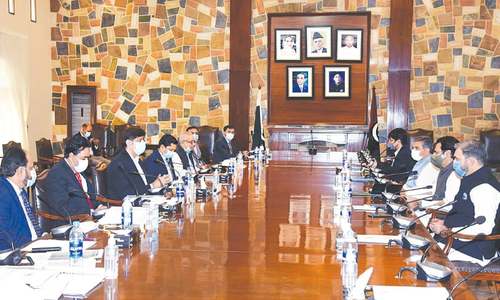ISLAMABAD: A parliamentary panel asked the government on Wednesday to immediately install telemetry system at all water discharge stations and appoint independent experts for measurement of water quantities, and directed the water regulator to ensure water distribution among the provinces as per the shares fixed in the 1991 water apportionment accord.
A meeting of the National Assembly’s Standing Committee on Water Resources presided over by Nawab Muhammad Yousuf Talpur was given a briefing on water distribution mechanism by chairman and members of the Indus River System Authority (Irsa).
The parliamentary committee believed that a proper telemetry system and independent inspectors would lead to implementation of the water apportionment accord in letter and spirit and in an environment of trust.
Irsa chairman Zahid Junejo, who is also the authority’s member from Sindh, told the committee the water regulator was discharging its functions and performing its duties in accordance with the powers delegated to it under the Irsa act.
Parliamentary panel urges govt to install telemetry system at water discharge stations, appoint independent experts
Normally all matters relating to water distribution and filling of reservoirs were decided unanimously, he said. However, in case of a disagreement, the decision was taken with a majority during Irsa meetings.
He said according to the water accord, 114 million acre feet (MAF) of water had to be distributed among the provinces. However, any shortfall was shared among the stakeholders as per the provisions of the said agreement.
Irsa’s member from Punjab Amjad Saeed said the provincial allocations were based on 114MAF of water but actually only 102MAF was available for use while about 22MAF was wasted as it flowed into the sea.
He said more water could be made available if new reservoirs were built to create additional storage capacity.
After detailed discussions, the standing committee “directed that water distribution should take place in accordance with Para 2 of 1991 Accord”, under which 114MAF water is divided among the provinces, with about 56MAF going to Punjab, about 49MAF to Sindh, about 9MAF to Khyber Pakhtunkhwa and about 4MAF to Balochistan.
Currently Irsa is distributing water as per a three-tier formula, resulting in sharing of water shortfalls among Punjab and Sindh only with the remaining water distributed according to historic uses of 1977-82. This goes against Sindh’s stance and the province has taken up the matter with the Council of Common Interests for adjudication.
The parliamentary committee was informed that a canal system of 2,600 miles was operating in Punjab, followed by 600 miles in Sindh. However, less water losses were reported in Punjab as compared to Sindh.
The meeting was informed that water losses were dependent upon the slope of land, the kind of land, rains and the atmospheric temperature. The land in Punjab is steeper and solid, whereas the land in Sindh is flat and sandy.
Punjab’s atmosphere is cold and wet. Also, more rains take place in that province. On the other hand, the atmosphere of Sindh is hot and dry. Moreover, less rains take place in that province. So, more water losses are reported in Sindh.
Unfortunately, so far no reliable system to measure water quantities at different points has been developed. To address the issue, a telemetry system is to be installed at different water discharge points in the country to help ensure that water measurement system was transparent and distribution of water fair.
The panel also instructed the Water and Power Development Authority and the Ministry of Water Resources to immediately install the latest telemetry system.
The representatives of water resources ministry said that Irsa has unanimously decided to hire the services of International Water Management Institute for water measurement so that it could be determined exactly how much water is being utilised by the provinces and how much of it is going to waste.
Published in Dawn, November 4th, 2021














































